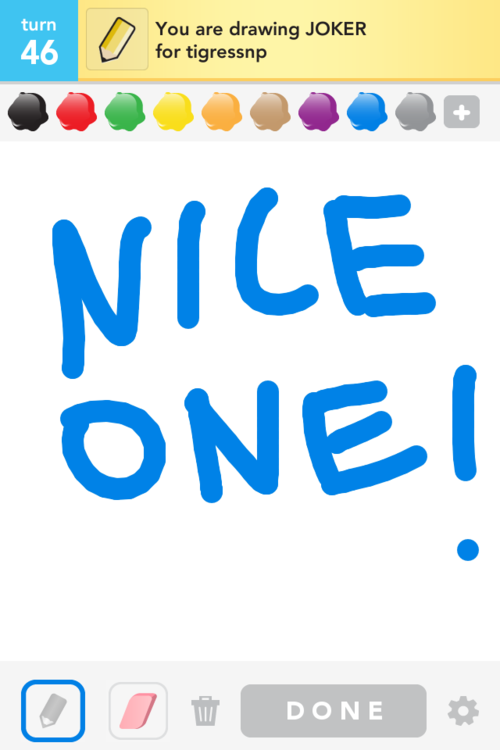Build Something … Simple
 OMGPOP’s Draw Something has skyrocketed in popularity, and is all the rage in our family. It’s a super simple smartphone app where you take turns guessing each other’s drawings. Once you start, it’s so easy to keep going.
OMGPOP’s Draw Something has skyrocketed in popularity, and is all the rage in our family. It’s a super simple smartphone app where you take turns guessing each other’s drawings. Once you start, it’s so easy to keep going.
I’ve played other drawing games that do all that and more, yet haven’t achieved nearly the same popularity. DrawSomething doesn’t even include the typical “social” features so often recommended for viral success. You can’t chat with other players. You can’t “star” or “thumbs up” their drawings. You can’t share them on Facebook.
So why, despite all that, is this the one that broke though, even to the point of being acquired by Zynga? My sister-in-law, Neha, hints at one reason:
“My cousin Anuj has taken to writing his comments about my drawing on his blank page and then erasing them and then drawing his drawing.”
Brilliant! They made their core feature so addictive that users are willing to invent their own creative workarounds for missing secondary features.
Likewise for picture sharing. Draw Something has no feature for saving and sharing your epic drawings, but that hasn’t stopped people from taking screenshots and posting them on sites like Awesome Drawsomes.
Software designers and developers are always tempted to load up their products with every feature they think users will want. But this inevitably clutters the product and delays getting it to market. Much better to nail your primary feature in a simple, addictive way, get it to market fast, and let real users tell you (or show you via creative workarounds) what’s missing. Remember, this is how Twitter hashtags were born.
What did OMGPOP gain by not implementing features?
- Faster time to market
- Cleaner, more inviting user experience
- Less excess baggage from features people don’t end up needing
- A smaller budget, which means more time to evolve the product in the market and fewer investors trying to run the show
Sure, OMGPOP is planning to add these features in upcoming releases. But by starting simple, they now have the luxury of planning new features rather than planning a going out of business sale.
.jpeg)